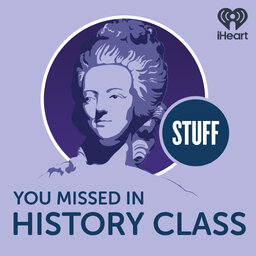Dr. Daniel Hale Williams
Dr. Daniel Hale Williams is often described as the first person to successfully perform an open-heart surgery. That's not entirely accurate, but he was still a surgical innovator, and he was also a huge part of the Black Hospital Movement.
Research:
- "Daniel Hale Williams." Contemporary Black Biography, vol. 2, Gale, 1992. Gale In Context: U.S. History, link.gale.com/apps/doc/K1606000260/GPS?u=mlin_n_melpub&sid=bookmark-GPS&xid=c4ae7664. Accessed 28 Jan. 2025.
- "Daniel Hale Williams." Notable Black American Men, Book II, edited by Jessie Carney Smith, Gale, 1998. Gale In Context: U.S. History, link.gale.com/apps/doc/K1622000479/GPS?u=mlin_n_melpub&sid=bookmark-GPS&xid=80e75e7e. Accessed 28 Jan. 2025.
- Buckler, Helen. “Doctor Dan: Pioneer in American Surgery.” Little, Brown and Company. 1954.
- Cobb, W M. “Daniel Hale Williams-Pioneer and Innovator.” Journal of the National Medical Association vol. 36,5 (1944): 158-9.
- COBB, W M. “Dr. Daniel Hale Williams.” Journal of the National Medical Association vol. 45,5 (1953): 379-85.
- Cook County Health. “Celebrating 30 Years: Provident Hospital of Cook County.” https://cookcountyhealth.org/provident-hospital-30th-anniversary/
- Gamble, Vanessa Northington. “Making a place for ourselves : the Black hospital movement, 1920-1945.” New York : Oxford University Press. 1995.
- Gamble, Vanessa Northington. “The Provident Hospital Project: An Experiment in Race Relations and Medical Education.” Bulletin of the History of Medicine, WINTER 1991. Via JSTOR. https://www.jstor.org/stable/44442639
- Gordon, Ralph C. “Daniel Hale Williams: Pioneer Black Surgeon and Educator.” Journal of Investigative Surgery, 18:105–106, 2005. DOI: 10.1080/08941930590956084
- Hughes, Langston. “Famous American Negroes.” Dodd Mead. 1954.
- Jackson State University. “Who Was Dr. Daniel Hale Williams?” https://www.jsums.edu/gtec/dr-daniel-hale-williams/
- Jefferson, Alisha J. and Tamra S. McKenzie. “Daniel Hale Williams, MD: ‘A Moses in the profession.’” American College of Surgeons CC2017 Poster Competition. 2017.
- Office of the Illinois Secretary of State. “51. Dr. Daniel Hale Williams Letter to Governor Joseph Fifer (1889).” 100 Most Valuable Documents at the Illinois State Archives. https://www.ilsos.gov/departments/archives/online_exhibits/100_documents/1889-williams-letter-gov.html
- Olivier, Albert F. “In Proper Perspective: Daniel Hale Williams, M.D.” Annals of Thoracic Surgery. Volume 37, Issue 1p96-97 January 1984. https://www.annalsthoracicsurgery.org/article/S0003-4975(10)60721-7/fulltext
- Raman, Jai. “Access to the Heart – Evolution of surgical techniques.” Global Surgery. Vol. 1, No. 2. doi: 10.15761/GOS.1000112
- Rock County, Wisconsin. “Dr. Daniel Hale Williams.” https://legacy.co.rock.wi.us/daniel-hale-williams
- Summerville, James. “Educating Black doctors : a history of Meharry Medical College.” University of Alabama Press. https://archive.org/details/educatingblackdo0000summ/
- The Provident Foundation. “History- Dr. Daniel Hale Williams.” https://provfound.org/index.php/history/history-dr-daniel-hale-williams
- “Early Chicago: Hospital of Hope.” DuSable to Obama: Chicago’s Black Metropolis. https://www.wttw.com/dusable-to-obama/provident-hospital
 Stuff You Missed in History Class
Stuff You Missed in History Class


